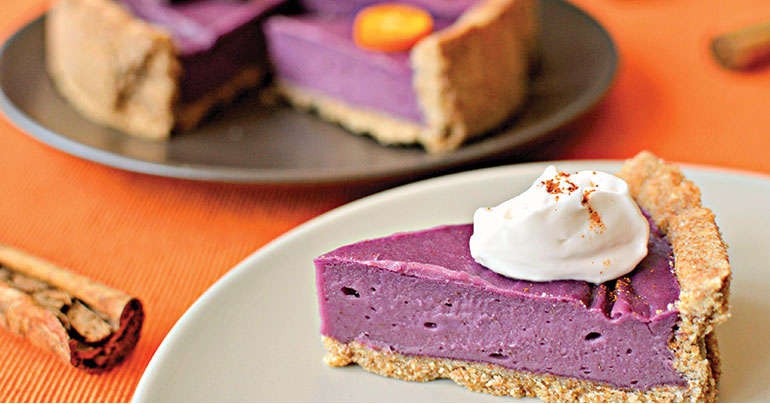Long used to give traditional Philippine desserts their unmistakable purple hue, ube has become a social media sensation among food lovers the world over

Trawling through Instagram for your foodie fix, you might be surprised to find a vivid dish no filter could explain. Pancakes the colour of plums. Muffins as richly purple as the robe of a Roman emperor. Violently violet ice cream coiled neatly in its cone. Readers from the Philippines know that this shade owes its brilliance not to any rare new breed of blueberry, but to a native root that has more in common with pumpkin than parfait: ube (“ooh-bay”).
Long used to give flair and flavour to traditional Philippine desserts, the purple yam – similar in texture, if not exactly in taste, to the sweet potato – is finding a new following in the trendiest cafes of the US. It’s not hard to see why: for a generation who see the world through social media, ube makes the perfect fodder for foodie humble-bragging, lending its plush purple shade to pastries and desserts alike.
One Los Angeles café and teahouse taking advantage of the growing demand for purple desserts is Cafe86. Drawing upon ube’s versatile blend of vanilla and coconut – not to mention its vivid violet veneer – Cafe86 has amassed a cult following in the West Coast city.
“It’s a very mellow-flavoured root vegetable,” Cafe86 chef and owner Ginger Dimapasok told Thrillist. “It’s such a unique flavour that people don’t normally have here in the United States.”
Back in the Philippines, where ube is frequently used to make a rich purple yam jam known as haleyung ube, the sumptuous shade signifies wealth and prosperity – it is no coincidence that the 100 peso note shares its hue. On Instagram, its meaning is much the same – though with an added exoticism thrown in for good measure. For a picture-perfect finish to your meal, an ube-based dessert is a dish fit for even the most filter-crazed foodie.
This article was published in the November edition of Southeast Asia Globe magazine. For full access, subscribe here.

